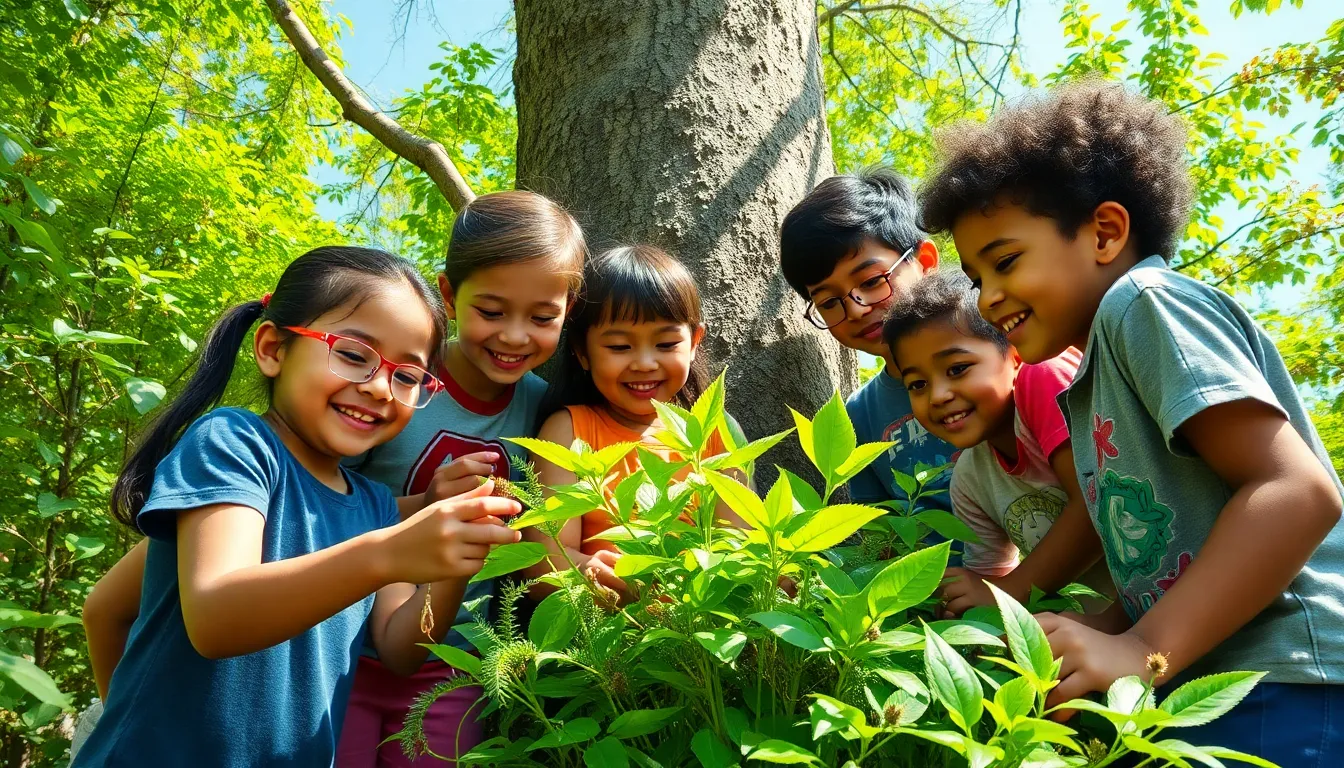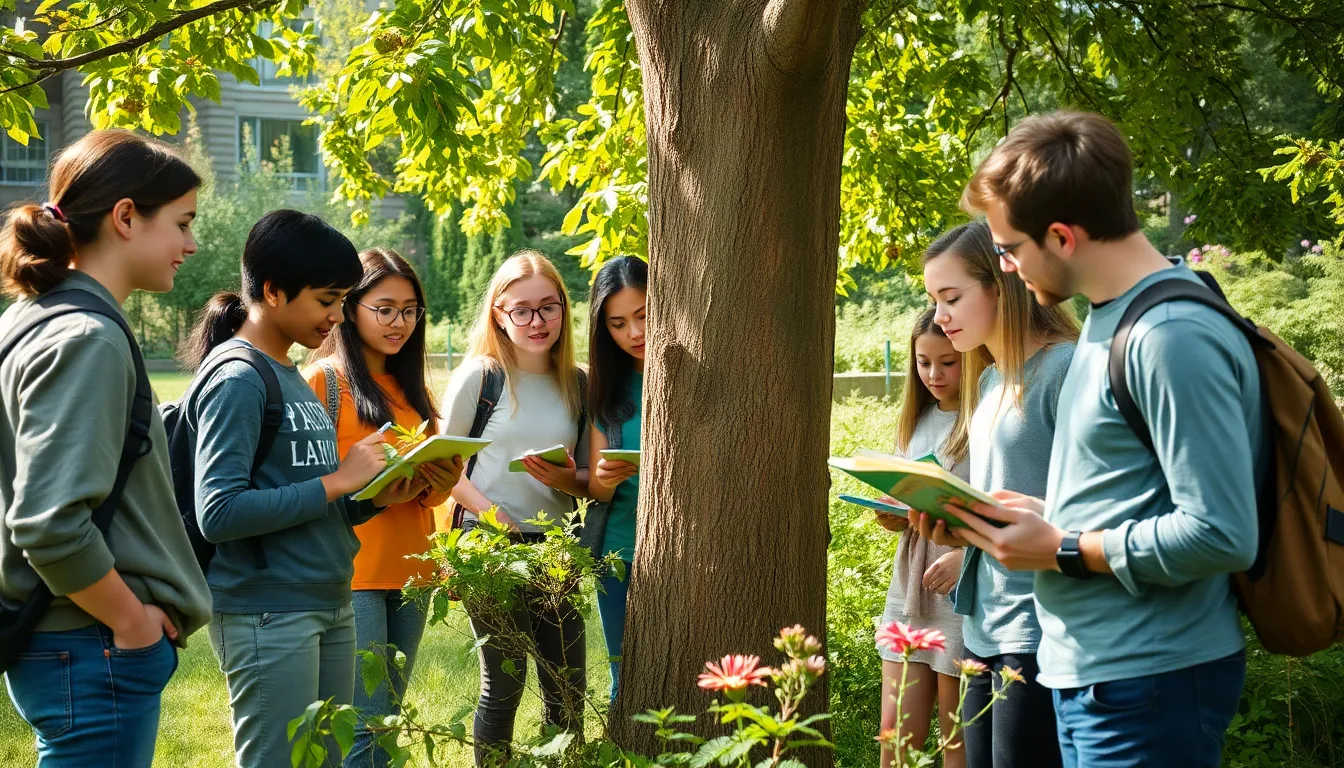Table of Contents
ToggleImagine a classroom where the walls are made of trees and the desks are rocks. Sounds like a dream, right? Welcome to the world of nature-based learning, where education meets the great outdoors. This innovative approach not only gets students out of stuffy classrooms but also immerses them in the wonders of nature.
What Is Nature-Based Learning?
Nature-based learning refers to an educational paradigm that immerses students in outdoor environments, transforming their learning experiences. This approach engages learners through direct interaction with nature, fostering a deep connection to the environment.
Curriculum activities include observing plants, studying ecosystems, or exploring local wildlife, allowing for hands-on experiences that traditional classrooms may lack. Benefits continue to surface; studies indicate that nature-based learning enhances critical thinking skills, promotes collaboration, and improves problem-solving abilities.
This method promotes holistic development, benefiting cognitive, emotional, and social growth. Research highlights that students exposed to outdoor learning demonstrate higher engagement and retention of information compared to those in conventional settings.
Schools increasingly adopt nature-based programs, reflecting a shift towards environmentally-centered education. Program structures often integrate field trips, outdoor classrooms, and community involvement, cultivating an appreciation for nature and sustainability.
Educators recognize that immersive experiences in nature stimulate curiosity and enhance creativity. Students often express increased motivation when learning in outdoor settings, resulting in strong connections to the subject matter.
Nature-based learning not only enriches academic knowledge but also instills responsibility toward environmental stewardship in students. With this approach gaining traction, its impact on education continues to resonate in various academic disciplines.
Benefits of Nature-Based Learning

Nature-based learning offers extensive advantages across various developmental areas. Engaging students with the outdoors enhances their overall learning experience, providing insights into cognitive, emotional, and social benefits.
Cognitive Development
Cognitive development thrives in nature-based learning environments. Students engaging with natural elements not only boost their critical thinking skills but also improve problem-solving abilities. Exploring ecosystems stimulates curiosity about diverse ecosystems. Activities such as identifying plant species foster observational skills. Research shows that children learning outdoors retain information better compared to traditional classroom settings, enhancing knowledge acquisition.
Emotional Well-being
Emotional well-being significantly improves through interactions with nature. Experiencing natural surroundings reduces stress levels in students, promoting feelings of relaxation and tranquility. Being outdoors inspires creativity and helps develop resilience. Nature also offers opportunities for self-reflection, which enhances emotional intelligence. Studies indicate that time spent in green spaces contributes to overall happiness and well-being, fostering a more positive outlook on learning.
Social Skills Improvement
Social skills benefit notably from nature-based activities. Group projects in outdoor settings encourage collaboration among students, fostering teamwork. Engaging with peers in these environments promotes communication and conflict resolution. Nature-based learning experiences often involve shared responsibilities, enhancing a sense of community. Observations reveal that students working together outdoors develop stronger relationships, leading to improved social interactions within and beyond the classroom.
Implementing Nature-Based Learning
Implementing nature-based learning requires thoughtful planning and resource allocation. Successful integration into the curriculum emphasizes experiential education, allowing students to explore the outdoors while aligning with academic standards.
Curriculum Design
Curriculum design for nature-based learning focuses on hands-on experiences. Activities might include monitoring local ecosystems or creating nature journals. Integrating science, art, and mathematics into these outdoor activities enhances interdisciplinary learning. Specific outcomes could involve students measuring tree heights or calculating the biodiversity of a local habitat. By embedding these experiences into the curriculum, educators can ensure relevance while fostering critical thinking and problem-solving skills.
Outdoor Learning Environments
Outdoor learning environments should provide safe, accessible spaces for exploration. Natural sites like parks and gardens serve as ideal classrooms. These settings encourage students to engage directly with their surroundings, stimulating curiosity. Interactive elements such as trails, native plants, and water features enrich learning experiences. Schools may also establish outdoor classrooms to facilitate structured lessons in nature. Flexibility in the environment enhances creativity and collaboration among students, promoting a stronger connection to academic content and surrounding ecosystems.
Challenges and Considerations
Nature-based learning presents unique challenges and considerations that educators must address. Accessibility and safety concerns rank among the primary issues.
Accessibility
Ensuring nature-based learning is accessible for all students is crucial. Students with disabilities might encounter barriers when engaging in outdoor activities. Transportation to natural sites must be reliable and feasible. Additionally, educators should assess the physical environment to guarantee it’s navigable. Providing adaptive equipment and alternative arrangements fosters inclusion. Collaborating with local organizations can enhance resource availability. Prioritizing accessibility allows all students to participate fully in nature-based learning experiences.
Safety Concerns
Safety concerns play a significant role in planning outdoor learning experiences. Teachers must evaluate potential hazards present in natural environments. Critical factors include terrain, weather conditions, and wildlife. Adequate supervision ensures student safety during activities. Establishing clear safety protocols and communicating them to students is essential. Organizing training sessions for staff can enhance preparedness. Developing first aid response plans ensures quick action in emergencies. Addressing safety concerns thoughtfully enables effective and enjoyable outdoor learning.
Nature-based learning represents a transformative approach to education that fosters a deeper connection between students and their environment. By integrating outdoor experiences into the curriculum, educators can enhance critical thinking, emotional well-being, and social skills. This innovative method not only enriches academic knowledge but also instills a sense of responsibility towards the planet. As more schools embrace nature-based programs, the potential for cultivating engaged, curious learners grows. With careful planning and consideration for accessibility and safety, nature-based learning can become a cornerstone of modern education, preparing students for a sustainable future.





